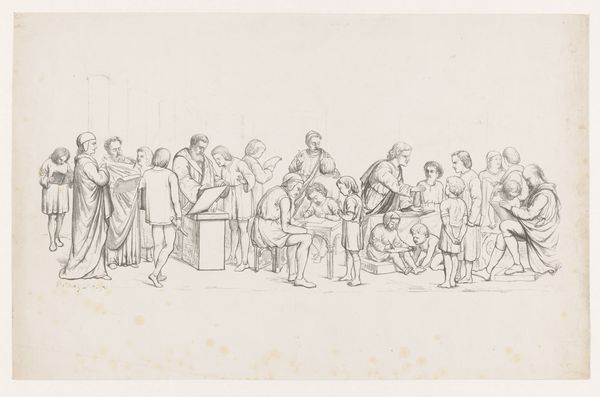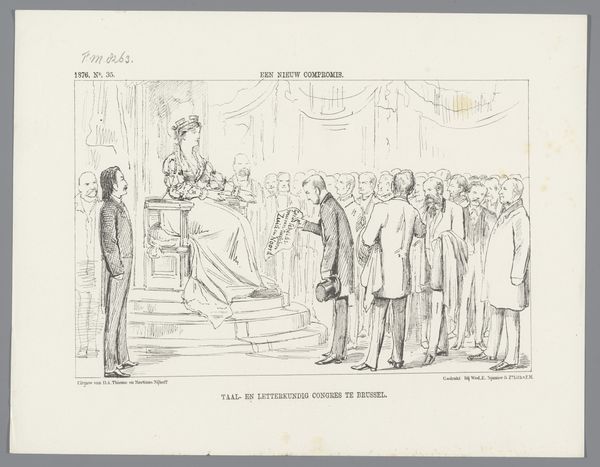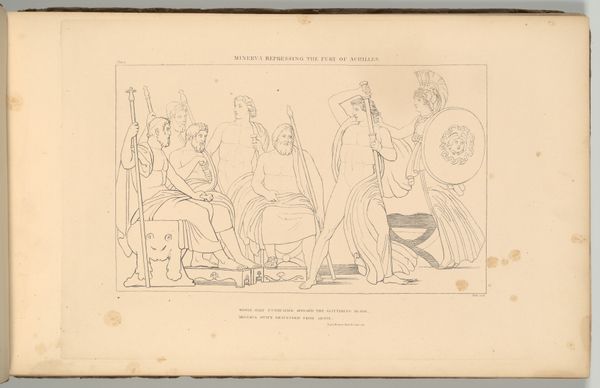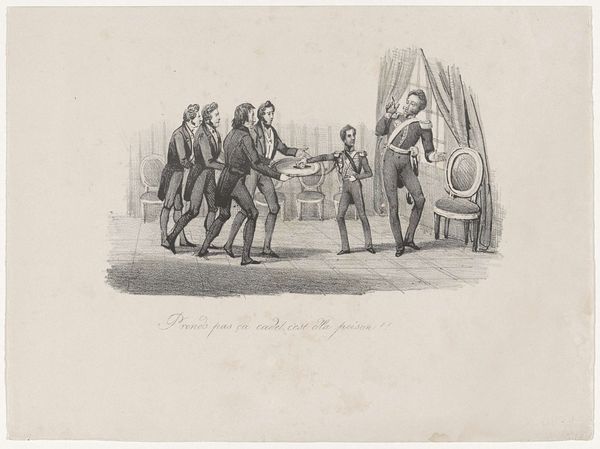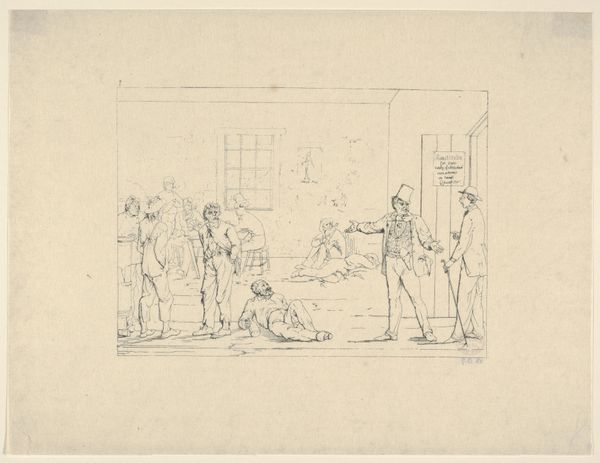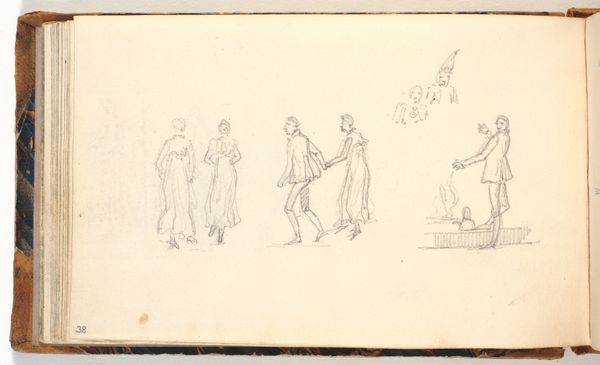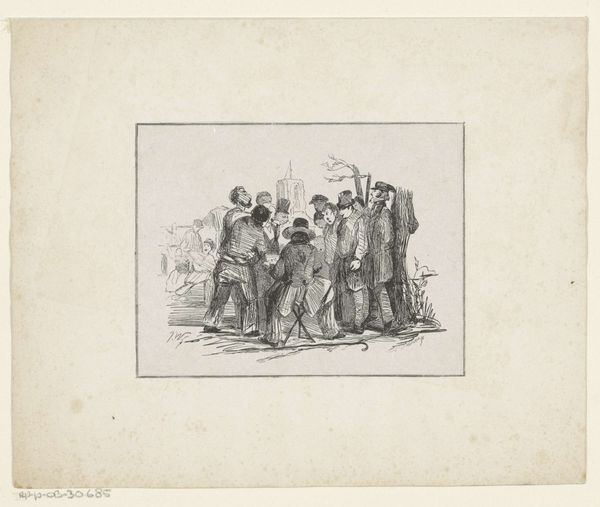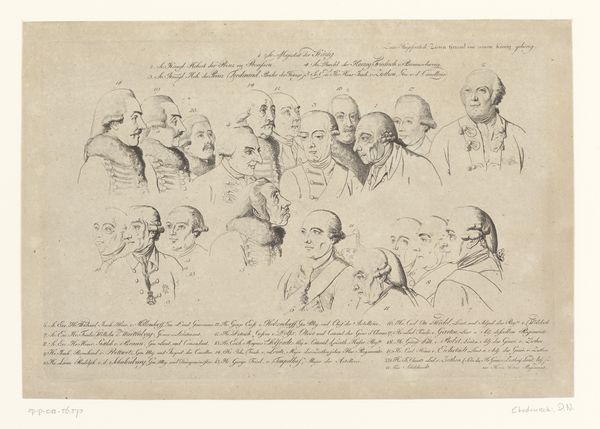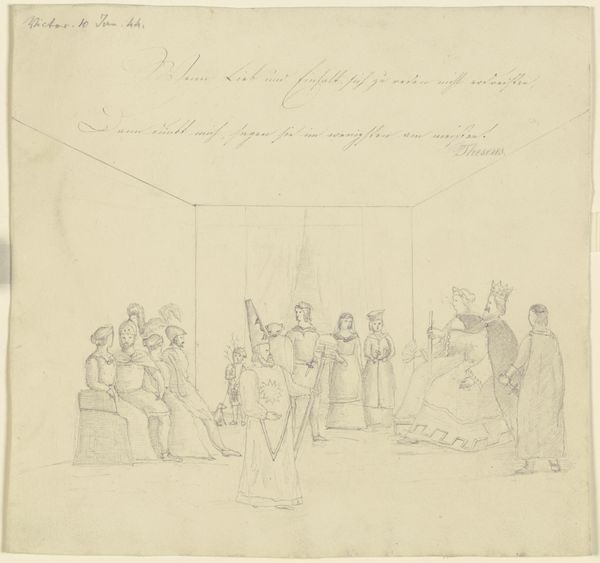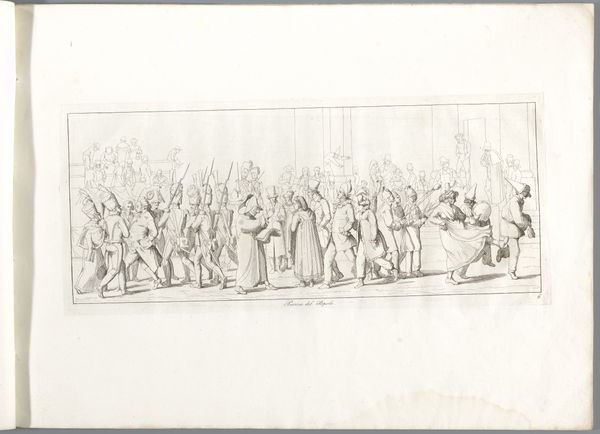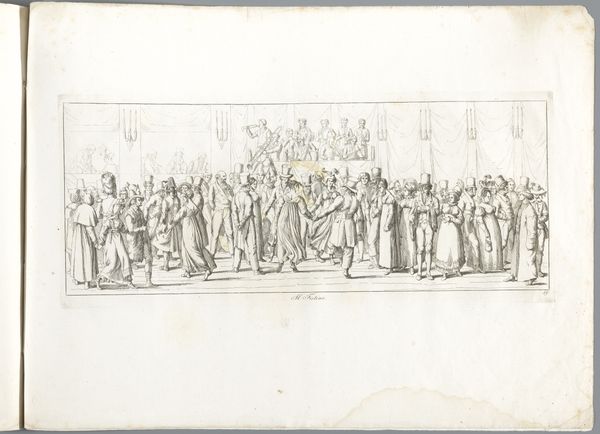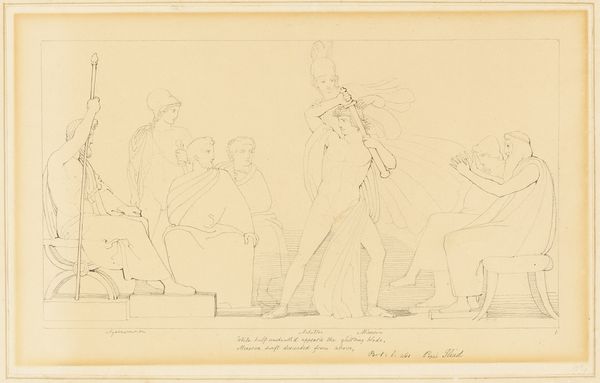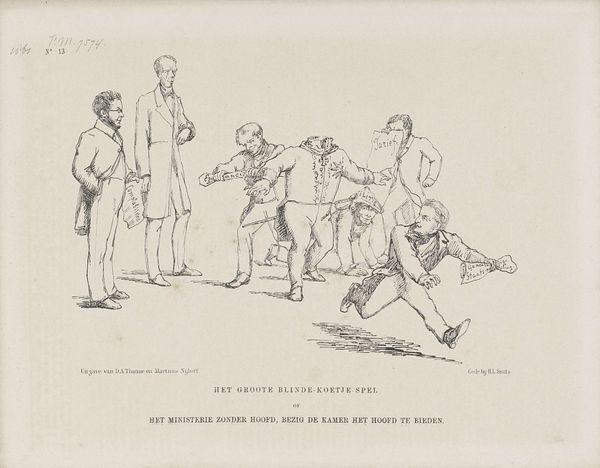
drawing, print, pencil, engraving
#
portrait
#
drawing
#
narrative-art
# print
#
classicism
#
pencil
#
history-painting
#
academic-art
#
engraving
Dimensions: height 300 mm, width 445 mm
Copyright: Rijks Museum: Open Domain
This print depicting Dido and the Trojans was made by John Doyle, sometime in the first half of the 19th century. It’s a lithograph, meaning that it would have been drawn on a flat stone with a greasy crayon, then treated with acid, inked, and printed. Notice the incredible fineness of the lines, and the subtle gradations of tone. To achieve this effect, Doyle would have needed a very smooth, high-quality stone, and considerable skill in drawing. Lithography was an exciting medium for artists because it allowed for the relatively easy reproduction of drawings. The technique democratized image-making, allowing prints like this to reach a wide audience. Satirical prints were especially popular in this period, because they could circulate political opinions and social commentary far and wide. Consider the labor involved in producing each print – the mining and preparation of the stone, the drawing, the printing itself. This all speaks to the growth of a print culture, fueled by industrialization and the rise of a mass audience.
Comments
No comments
Be the first to comment and join the conversation on the ultimate creative platform.
